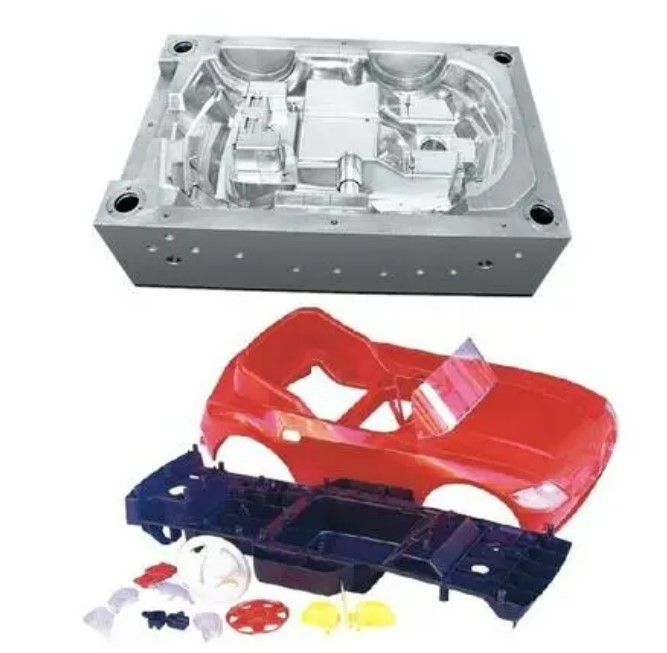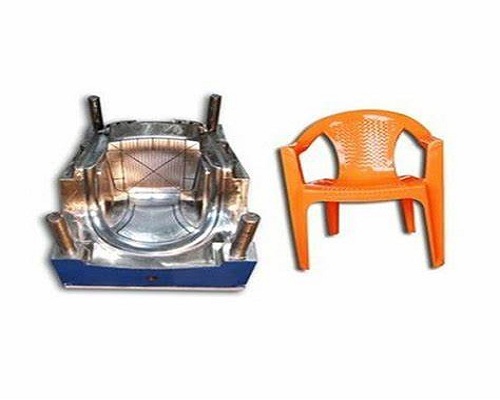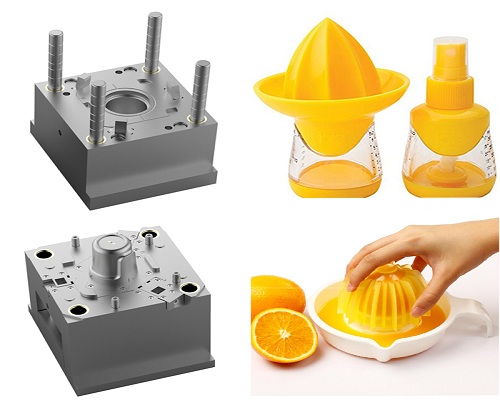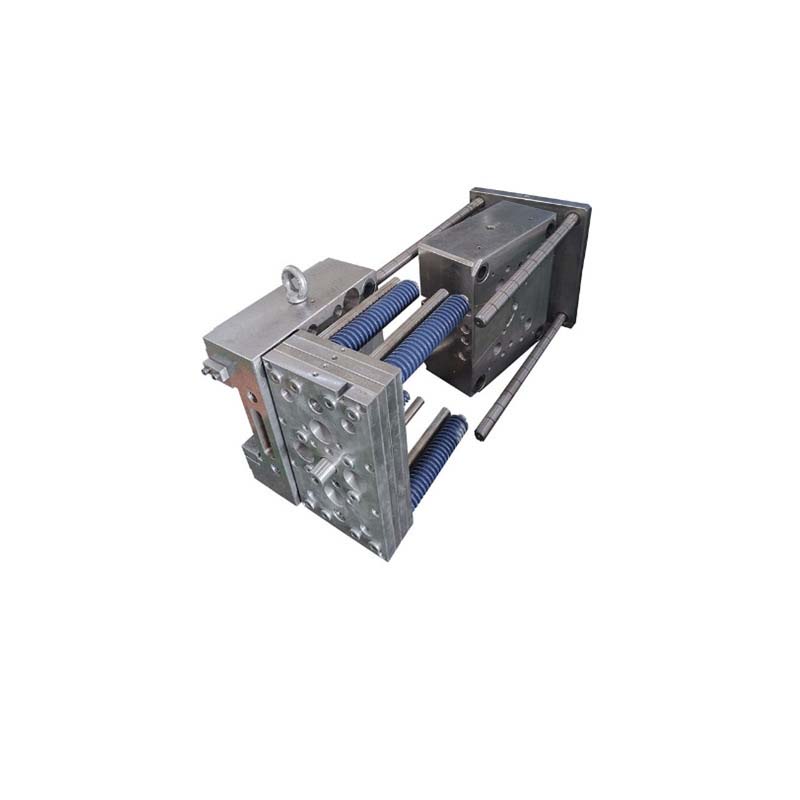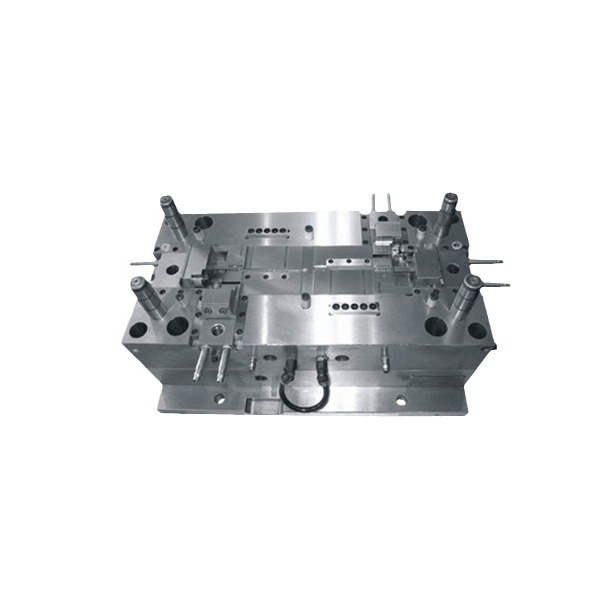1. Introduction
1.1 Defining Mold Design
Mold design is the intricate process of creating a detailed plan for molds, which are specialized tools used in manufacturing to shape various materials into specific forms. These molds can be made from materials such as steel, aluminum, or even high - temperature plastics, depending on the requirements of the production process. For example, in plastic injection molding, a mold is designed to precisely shape molten plastic into parts like smartphone cases or automotive interior components. The mold design encompasses every aspect, from the layout of the cavities and cores that form the product's shape to the design of the runner system that channels the molten material into the mold, and the cooling channels that help solidify the product quickly and evenly.
In the field of metal casting, mold design takes on a different set of challenges. The mold must be able to withstand the high temperatures of molten metal, and the design needs to account for the shrinkage and expansion of the metal during the cooling process. For instance, in die - casting, where non - ferrous metals like aluminum and zinc are used to produce complex parts such as engine components, the mold design must ensure that the metal fills all the intricate details of the part while minimizing defects.
1.2 The Link to Production Success
The connection between effective mold design and successful production is profound and multi - faceted. A well - designed mold serves as the foundation for high - quality, efficient, and cost - effective production. First and foremost, it directly impacts the quality of the final products. A mold with precise dimensions and smooth surfaces will result in products that meet or exceed quality standards, with tight tolerances and excellent surface finishes. For example, in the production of optical lenses, the mold design must be so precise that the lenses produced have the correct curvature and surface smoothness to ensure optimal optical performance.
Secondly, efficient mold design can significantly reduce production time. A well - thought - out runner and cooling system can speed up the injection or casting process. By reducing the cooling time, more parts can be produced in a given period. For instance, in the mass production of plastic toys, a mold with an optimized cooling system can cut down the cycle time from several minutes to just a few seconds per part, greatly increasing the production output.
Cost - effectiveness is another crucial aspect. A good mold design can minimize material waste and reduce the need for costly rework or repairs. If a mold is designed to efficiently use the raw material, less material is wasted during the production process. Additionally, a durable mold design that requires fewer maintenance and repair operations over its lifespan can save a significant amount of money in the long run. All in all, mold design is not just a preliminary step in production but a key determinant of the overall success of the manufacturing process, and this will be further explored in the following sections.
2. Key Aspects of Effective Mold Design
2.1 Material Selection
The choice of materials in mold design is a fundamental decision that significantly impacts the performance of the mold and the quality of the final products. Common mold materials include steel, aluminum, and plastics, each with its own unique set of characteristics.
Steel is a popular choice for molds due to its high strength, excellent wear resistance, and good heat resistance. For example, tool steel, such as P20 and H13, is widely used in plastic injection molds and die - casting molds. P20, a pre - hardened steel, is suitable for medium - sized molds with moderate complexity. It has a hardness of around 30 - 35 HRC (Rockwell Hardness Scale), which allows for relatively easy machining and is suitable for producing parts like automotive interior components. H13, on the other hand, is a hot - work tool steel with high toughness and heat resistance, capable of withstanding temperatures up to 650°C. It is often used in die - casting molds for metals like aluminum and magnesium, where the mold needs to endure repeated exposure to high - temperature molten metal.
Aluminum, with its low density and excellent thermal conductivity, offers faster cooling times in the molding process. This can lead to shorter cycle times and increased production efficiency. Aluminum molds are often used in applications where weight is a concern, such as in the production of small - scale consumer products like disposable razors or toys. However, aluminum has lower strength and wear resistance compared to steel, so it may not be suitable for high - volume production or for molding abrasive materials.
Plastic materials, such as epoxy - based resins, are sometimes used for low - cost, short - run molds. They are relatively easy to machine and can be formed into complex shapes. For instance, in the prototyping stage, plastic molds can be quickly fabricated to test the design concept of a product. But plastic molds have limitations in terms of heat resistance and durability, and they are mainly used for low - temperature molding processes or for producing a small number of parts.
In summary, the material selection should be based on factors like the type of material to be molded, the production volume, the required surface finish, and the cost - effectiveness. A wrong material choice can lead to premature mold wear, poor product quality, and increased production costs.
2.2 Design for Manufacturability (DFM)
Design for Manufacturability (DFM) is a crucial concept in mold design that focuses on creating a design that can be easily and efficiently manufactured. This approach aims to simplify the manufacturing process, reduce production costs, and shorten the production cycle.
One of the key aspects of DFM is simplifying the machining process. By reducing the complexity of the mold geometry, manufacturers can use fewer machining operations. For example, instead of designing a mold with intricate undercuts that require complex multi - axis machining, a design with more straightforward features can be created. This not only reduces the machining time but also lowers the risk of machining errors.
Another important consideration is minimizing the number of processing steps. A well - designed mold should be able to be produced with as few manufacturing steps as possible. For instance, integrating multiple features into a single mold component can eliminate the need for additional assembly operations. This reduces the time and cost associated with assembling different parts of the mold.
Tolerance requirements also play a significant role in DFM. Setting appropriate tolerances can balance the need for product quality with the cost of manufacturing. Tighter tolerances generally require more precise machining processes, which can increase costs. For example, in a simple plastic toy production, overly tight tolerances on the mold may not be necessary as long as the toy functions properly. On the other hand, in the production of high - precision medical devices, very tight tolerances are essential to ensure proper fit and function. By carefully considering the tolerance requirements during the mold design phase, manufacturers can avoid unnecessary costs while still meeting the product's quality standards.
Overall, DFM is about making the design process and the manufacturing process work in harmony. It helps to identify potential manufacturing issues early on and provides solutions to overcome them, resulting in a more efficient and cost - effective production process.
2.3 Precision and Tolerance
Precision and tolerance are critical elements in mold design, as they directly impact the performance and functionality of the final products. Precise mold design ensures that the products produced have the correct dimensions, shapes, and surface finishes.
The importance of strict tolerance control cannot be overstated. Different industries have varying requirements for mold precision and tolerance. The following table shows the general tolerance requirements for some common industries:
| Industry | Precision (mm) | Tolerance Range (mm) |
| Aerospace | ±0.01 - ±0.05 | Tight tolerances to ensure the safety and performance of aircraft components |
| Automotive | ±0.05 - ±0.1 | For proper fit and function of engine parts, body panels, etc. |
| Electronics | ±0.01 - ±0.03 | Essential for components like connectors and micro - chips |
| Consumer Goods | ±0.1 - ±0.5 | Depending on the product, such as toys or household items |
In the aerospace industry, where safety is of utmost importance, even the slightest deviation in the mold's precision can lead to catastrophic consequences. For example, a turbine blade in an aircraft engine must be manufactured with extremely tight tolerances to ensure proper rotation and efficient operation. If the mold used to produce the blade has a tolerance error, it could cause the blade to malfunction, leading to engine failure.
In the automotive industry, precise molds are required to ensure that parts fit together correctly during assembly. A misaligned mold can result in parts that do not fit properly, leading to issues such as leaks, vibrations, or reduced fuel efficiency. For example, if the mold for an engine block has inaccurate dimensions, it can affect the alignment of the cylinders, causing problems with the engine's performance.
In the electronics industry, components are becoming increasingly smaller and more complex. High - precision molds are needed to produce parts like connectors and micro - chips with the required accuracy. Even a small deviation in the mold's tolerance can lead to poor electrical connections or malfunctioning components.
In conclusion, precision and tolerance in mold design are not only about meeting the technical requirements of the products but also about ensuring their overall quality, functionality, and safety.
6. Yigu Technology's Perspective
As a non - standard plastic metal products custom Supplier, Yigu Technology deeply understands the crucial role of effective mold design in production. With years of experience in the field, the company has made significant investments in mold design technology.
Yigu Technology's mold design team consists of highly skilled professionals who are well - versed in the latest design software and techniques. They use advanced CAD/CAM/CAE technologies to create detailed and optimized mold designs. For example, in the design of plastic injection molds for complex electronic components, the team uses CAE software to simulate the filling process, temperature distribution, and stress in the mold, ensuring that the final design can produce high - quality components with minimal defects.
The company also focuses on innovation in mold design. It constantly explores new materials and design concepts to meet the ever - changing needs of customers. For instance, when developing molds for high - performance automotive parts, Yigu Technology may experiment with new alloy materials to improve the mold's durability and heat resistance.
By having excellent mold design capabilities, Yigu Technology can meet the diverse requirements of its customers. Whether it's a small - batch production of customized prototypes or large - scale mass production, the company can ensure high - quality product output. The well - designed molds also contribute to improved production efficiency, reducing production cycle times and costs. In short, effective mold design is the cornerstone of Yigu Technology's success in providing high - quality non - standard plastic metal products.
